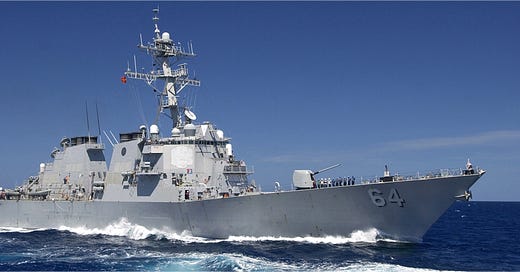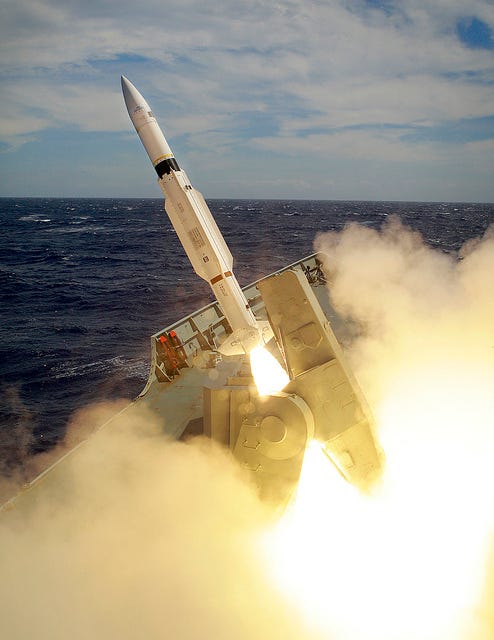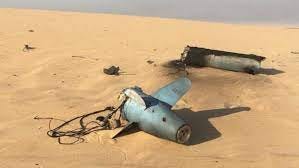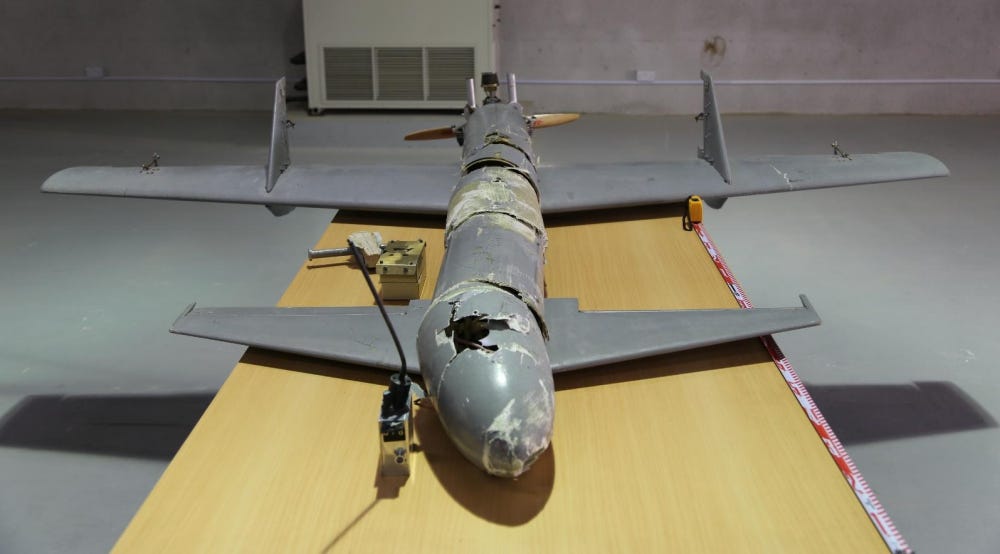

Discover more from Weapons and Strategy
It is unlikely that the launch of three cruise missiles and eight drones by the Houthis in Yemen was aimed at Israel. The attack was aimed at the US destroyer, USS Carney.
Unless new, much longer range cruise missiles have arrived in Yemen, the cruise missiles fired at the USS Carney, an Admiral Burke class destroyer, probably lacked range to hit Israel. So far, the US Navy has not clarified whether the missiles were aimed at the Carney or at Israel, saying it is looking into the matter.
Three cruise missiles and eight Kamikaze drones were taken out by the Carney. The cruise missiles were intercepted by SM-2 missiles, launched by the AEGIS air defense system. The Navy has not told us what weapons were used to go after the drones.
The US has not responded to the cruise missile and drone attacks, has launched no punitive attacks on Yemen, or done anything to sanction the real source, Iran.
The use of drones and cruise missiles is a tactic employed by the Houthis in the past to go after the Patriot Air Defense System. Saudi Arabia has the Patriot system and the US has deployed Patriots there too.
The idea behind it is to use the drones to smash into the radars of the Patriot, disabling the system. After the radars are killed, the cruise missiles can either be used to hit the Patriot command centers or launchers, or it can go after other important targets since the Patriot would not be available to defeat the cruise missiles.
Iran used cruise missiles in the 2019 attack on the Khurais and Abqaiq oil installations along with drones. These were either launched from Iranian territory or from northern Iraq. The cruise missile used by the Iranians was the model Iran prepared for the Houthis and not the cruise missiles in Iran's arsenal, such as the Sommar (based on the Russian KH-55 "Kent" (the NATO name). The Sommar has a range of 3,000 kilometers (1,864 miles) and, if launched from Yemen, could hit targets in Israel.
There is no information that Sommar type cruise missiles are in Yemen.
The cruise missiles in Yemen are the Quds-1, Quds-2 and Quds-3 The range of the Quds-2 is 1,350 km (840 miles) and Quds-3 perhaps 2,000 km (1,243 miles). The Quds is somewhat smaller than the Sommar or Kent and it uses a less capable turbofan engine. The Saudis recovered most of a Quds-2 cruise missile that crashed in the desert. Of these only the Quds-3 can potentially hit Israeli targets thanks to its larger fuel tank.
The Houthis also have Kamikaze drones, sometimes called one-way drones. The most well known is the Qasef-1. It is a version of the Iranian Ababil-1 but is converted into a loitering munition. According to published reports, it has a range of 100 km (60 miles). If the 8 drones that were destroyed by the Carney were the Qasef 1 model, the drones were aimed at the Carney, certainly not at Israel.
The Navy has not given us the actual coordinates of the Carney. It was operating along the west coast of Yemen in the Red Sea. In the past most Houthi ballistic missile, cruise missile and drones have been launched in this area, close to al Hudaydah, which is roughly half way up the Yemen west coast. The Carney certainly can identify the actual launch location but have not reported that information.
Meanwhile there have been seven attacks on US bases and facilities in Iraq and Syria. These involved kamikaze drones and rockets. Most, but not all, have been intercepted. If these additional attacks in Syria were by Hezbollah then it is certain the green light for the attacks on US bases came from Iran, as Hezbollah is an Iranian proxy. The attacks in Iraq were carried out by pro-Iranian militias including the Kataib Hezbollah militia. In these attacks some US servicemen were lightly wounded and one US contractor died from a suspected heart attack.
President Biden in his televised address on Thursday evening, October 20, never mentioned Iran.
While Biden certainly wants to avoid a conflict with Iran, it is hard to do if Iran's proxies are attacking the US Navy and US bases in Iraq and Syria. Biden also has a serious political problem because he supported Iran financially while reducing pressure on Iran's nuclear program. During the Biden administration successive attacks on US facilities in the Middle East, organized by Iranian proxies, not just the latest ones, have not been addressed.
Looming now is a major Hezbollah-Syrian attack on Israel. Both are clients of Iran, although Syria also depends on Russia. Israel is preparing for a two-front war, and has already evacuated Kiryat Shmona near the Lebanese border.
Biden's inability to put any pressure on Iran, or even to mention how Iran is organizing the threat to both Israel and US interests, means there is no deterrent to the coming war.








Iran has a series of "industrial accidents"?
The question remains: What was USS Carney doing in The Red Sea in the first place?